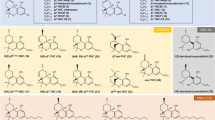Abstract
Assessment of a new chemical entity for cytochrome P450 (CYP) enzyme induction at an early stage in discovery is crucial to prevent potential drug–drug interactions. CYP3A, the most abundant CYP isoform in the liver, metabolizes approximately 50% of drugs currently on the market and is also a highly inducible enzyme. The use of both rat and human hepatocyte culture for the prediction of in vivo CYP3A induction has become refined and validated and is considered a standard in vitro model. The current evaluation of CYP3A enzyme induction involves the use of substrates requiring subsequent analysis of metabolites by high-performance liquid chromatography/mass spectrometry, which adds considerable time and cost. In the present study, we describe the use of a novel luminogenic substrate, luciferin-6′-pentafluoro-benzyl ether (PFBE), which allows for a fast and selective measurement of CYP3A enzyme induction in cultured rat hepatocytes. The extent of induction was evaluated using cells treated for 3 d with the prototypical inducers, dexamethasone, phenobarbital, and pregnenolone 16 alpha-carbonitrile (PCN). Enzyme activity was measured in the treated cells either by the depentafluorobenzylation of luciferin-PFBE or the testosterone 6-β-hydroxylation. Using both methods, dexamethasone and PCN-treated cells exhibited strong CYP3A activity, whereas phenobarbital treatment resulted in a weak response. The fold induction varied between both methods, but this variability can be controlled by normalizing data from each treatment to a positive control. The results indicate that luciferin-PFBE is an attractive alternative to the use of conventional substrate, testosterone, providing a sensitive, robust, and rapid method compatible with the multiwell plate format for the assessment of CYP3A induction.



Similar content being viewed by others
References
Anzenbacher P.; Anzenbacherova E. Cytochromes P450 and metabolism of xenobiotics. Cell Mol Life Sci 58:737–747; 2001.
Bjornsson T. D.; Callaghan J. T.; Einolf H. J., et al. The conduct of in vitro and in vivo drug-drug interaction studies: a Pharmaceutical Research and Manufacturers of America (PhRMA) perspective. Drug Metab Dispos 31:815–832; 2003.
Cali J. L.; Ma D.; Sobol M.; Simpson D. J.; Frackman S.; Good T. D.; Daily W. J.; Liu D. Luminogenic cytochrome P450 assays. Expert Opin Drug Metab Toxicol 2:629–45; 2006.
Davila J. C.; Morris D. L. Analysis of cytochrome P450 and phase II conjugating enzyme expression in adult male rat hepatocytes. In Vitro Cell Dev Biol—Animal 35:120–130; 1999.
Donato M. T.; Castell J. V. Strategies and molecular probes to investigate the role of cytochrome P450 in drug metabolism. Clin Pharmacokinet 42:153–178; 2003.
Donato M. T.; Jimenez N.; Castell J. V.; Gomez-Lechon J. Fluorescence-based assays for screening nine cytochrome P450 (P450) activities in intact cells expressing individual human P450 enzymes. Drug Metab Dispos 32:699–706; 2004.
Garcia M. C.; Chellappagounder T.; Shapiro B. Epidermal growth factor regulation of female-dependent CYP2A1 and CYP2C12 in primary rat hepatocyte culture. Drug Metab Dispos 29:111–120; 2001.
Hoen PAC’t; Commandeur J. N. M.; Vermeleun N. P. E.; Van Berkel T. J. C.; Bijsterbosch M. K. Selective Induction of cytochrome P4503A1 by dexamethasone in cultured rat hepatocytes. Biochem Pharmacol 60:1509–1518; 2000.
Kern A.; Bader A.; Pichlmary R.; Sewing K. F. Drug metabolism in hepatocyte sandwich cultures of rats and humans. Biochem Pharmacol 54:761–772; 1997.
Kocarek T.; Schuetz E. G.; Strom S. C.; Fisher R. A.; Guzelian P. S. Comparative analysis of cytochrome P4503A induction in primary cultures of rat, rabbit, and human hepatocytes. Drug Metab Dispos 23:415–421; 1995.
Kostrubsky V. E.; Ramachandran V.; Venkataraman R.; Dorko K.; Esplen J. E.; Zhang S.; Sinclair J. F.; Wrighton S. A.; Strom S. C. The use of human hepatocyte cultures to study the induction of cytochrome P-450. Drug Metab Dispos 27:887–894; 1999.
Parkinson A. Biotransformation of xenobiotics. In: Klaassen CD (ed), Casarett and Doull’s Toxicology. The Basic Science of Poisons. 6th ed. McGraw-Hill, New York, pp 133–224; 2001.
Silva J. M.; Morin P. E.; Day S. H.; Kennedy B. P.; Payette P.; Rushmore T.; Yergey J. A.; Nicoll-Griffith D. A. Refinement of an in vitro cell model for cytochrome P450 induction. Drug Metab Dispos 26:490–496; 1998.
Schuetz E. R. Induction of cytochromes P450. Curr Drug Metab 2:139–147; 2001.
Stresser D. M.; Turner S. D.; Blanchard A. P.; Miller V. P.; Crespi C. L. Cytochrome P450 fluorometric substrates: identification of isoform-selective probes for rat CYP2D2 and human CYP3A4. Drug Metab Dispos 30:845–852; 2002.
Thummel K. E.; Wilkinson G. R. In vitro and in vivo drug interactions involving human CYP3A. Annu Rev Pharmacol Toxicol 38:389–430; 1998.
Walsky R. L.; Obach R. S. Validated assays for human cytochrome P450 activities. Drug Metab Dispos 32:647–660; 2004.
Author information
Authors and Affiliations
Corresponding author
Additional information
Editor: J. Denry Sato
Rights and permissions
About this article
Cite this article
Garcia, M.C., Ma, D., DiCioccio, A.T. et al. The use of a high-throughput luminescent method to assess CYP3A enzyme induction in cultured rat hepatocytes. In Vitro Cell.Dev.Biol.-Animal 44, 129–134 (2008). https://doi.org/10.1007/s11626-008-9085-1
Received:
Accepted:
Published:
Issue Date:
DOI: https://doi.org/10.1007/s11626-008-9085-1




